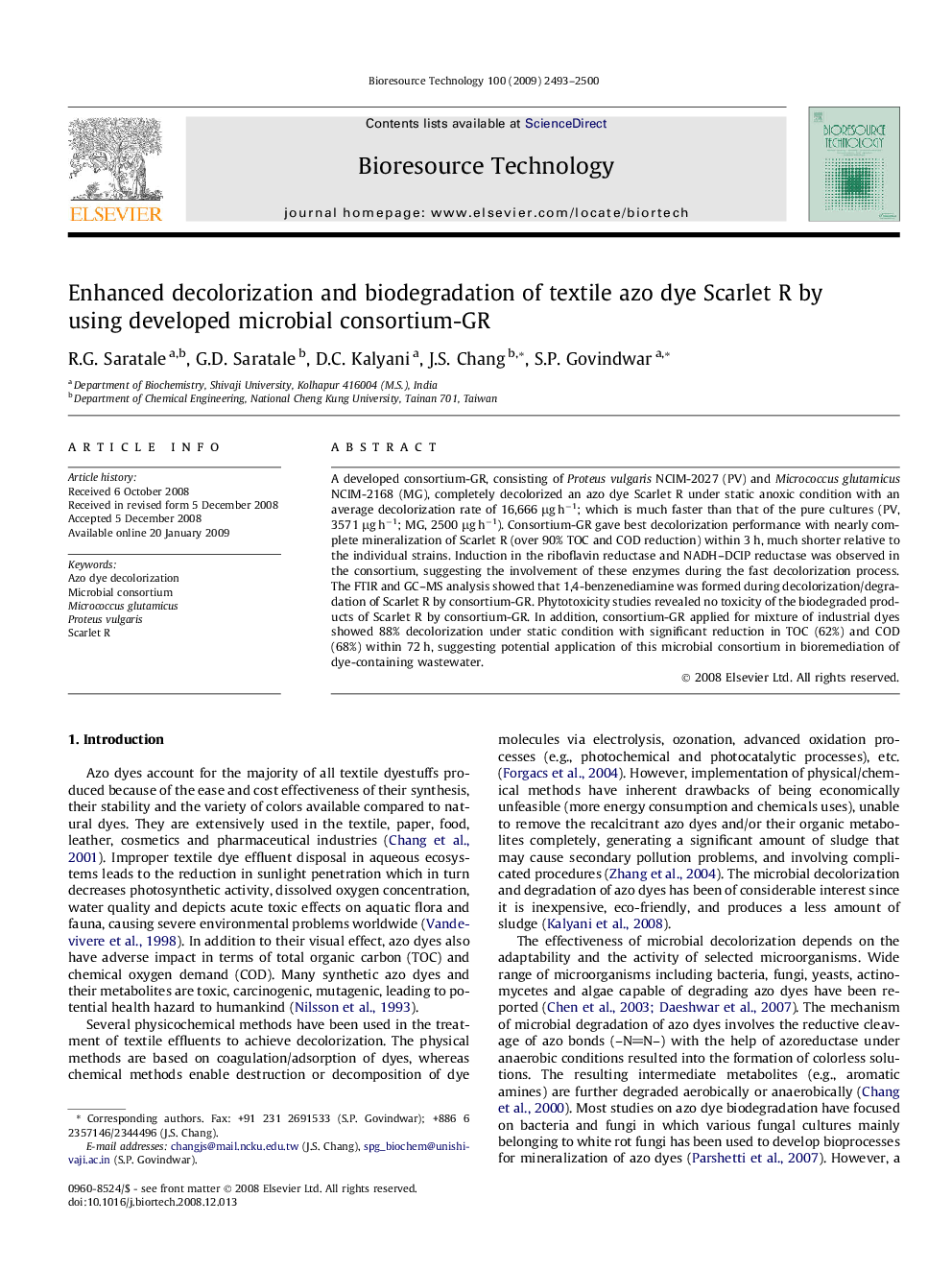| Article ID | Journal | Published Year | Pages | File Type |
|---|---|---|---|---|
| 685694 | Bioresource Technology | 2009 | 8 Pages |
A developed consortium-GR, consisting of Proteus vulgaris NCIM-2027 (PV) and Micrococcus glutamicus NCIM-2168 (MG), completely decolorized an azo dye Scarlet R under static anoxic condition with an average decolorization rate of 16,666 μg h−1; which is much faster than that of the pure cultures (PV, 3571 μg h−1; MG, 2500 μg h−1). Consortium-GR gave best decolorization performance with nearly complete mineralization of Scarlet R (over 90% TOC and COD reduction) within 3 h, much shorter relative to the individual strains. Induction in the riboflavin reductase and NADH–DCIP reductase was observed in the consortium, suggesting the involvement of these enzymes during the fast decolorization process. The FTIR and GC–MS analysis showed that 1,4-benzenediamine was formed during decolorization/degradation of Scarlet R by consortium-GR. Phytotoxicity studies revealed no toxicity of the biodegraded products of Scarlet R by consortium-GR. In addition, consortium-GR applied for mixture of industrial dyes showed 88% decolorization under static condition with significant reduction in TOC (62%) and COD (68%) within 72 h, suggesting potential application of this microbial consortium in bioremediation of dye-containing wastewater.
